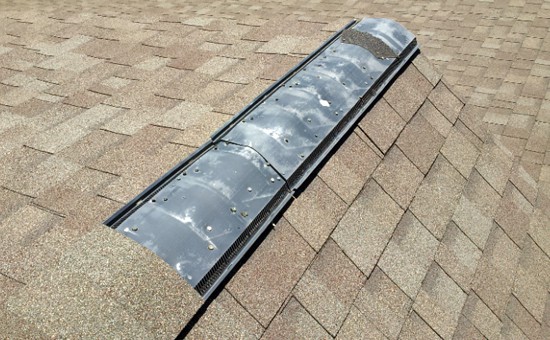Question
We live in rural Illinois in a north-facing home. I’m having a hard time keeping ridge cap 3-tab shingles on the roof because of high winds. The wind pulls them off 6 to 8 at a time while leaving the nails intact. I have layered the tabs in a north-south direction, even tacking the tabs down but to no avail. They are sitting on a 1” vent material. Is there a better way to put the shingles on and strap the
Answer
You may have several concurrent issues to consider; we will cover them all in lieu of not yet inspecting the conditions of your home.
First, you live in the flat state of Illinois which can be very windy. A good choice for your situation is shingles rated for windy or coastal applications, and most shingle manufacturers have these available. These shingles are made to better hold up to high winds and hurricanes with more adhesive between each shingle to create a sheet-like surface that holds better in the wind.
The second issue is the cap shingles blowing off the ridge vent system. You can change the direction of the exposed raised edge of the ridge cap shingles by installing them – in your case – from south to north, the opposite of your current state. If one direction of wind is more prevalent around your house, this may keep the shingles on the roof longer by keeping the raised edge down-wind. Also, considering that wind is a continual problem, you may want to change your attic venting system from the current ridge cap to standard low profile pan vents. The pan vents are rated for higher winds.
The third issue is how the cap shingles are attached to the ridge vent system. If the shingles have been applied with staples, please switch to nail fasteners. Also, explore a threaded fastener with a much bigger head which increases its ability to hold down the shingle. Sometimes the ridge systems need a better fastener (screws and an adhesive) to stay attached to the ridge vent material. You can even put plastic tabs onto the threaded screws if the roofing nails are pulling out of the ridge cap material.
The fourth issue is your type of roof. Every house location is different with topography, trees, terrain, nearby houses and wind direction all affecting the longevity of the roof. This means that your nearby neighbor’s house may not have this wind issue but you do. Your next roof choice must be one rated and installed for windy conditions, and may need to be a metal, composition, slate or tile material.
You need an experienced and responsive roofer to assess and solve your problem. We offer the kind of roofing service you need. If you’d like our help, please call the Mosby office at 314.909.1800 or contact us here.
And for more answers to common home maintenance questions, visit our Home Improvement Library.




